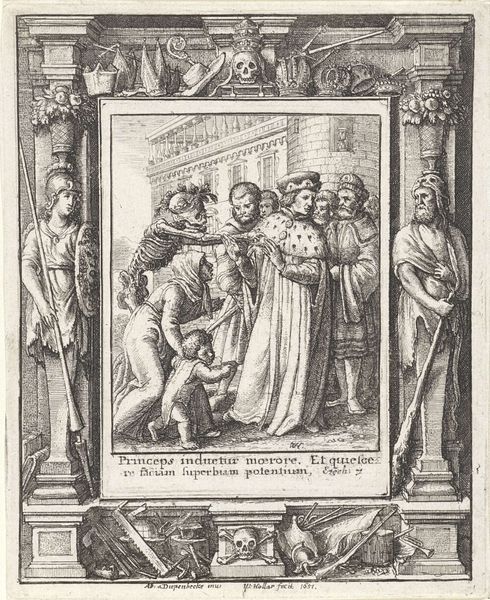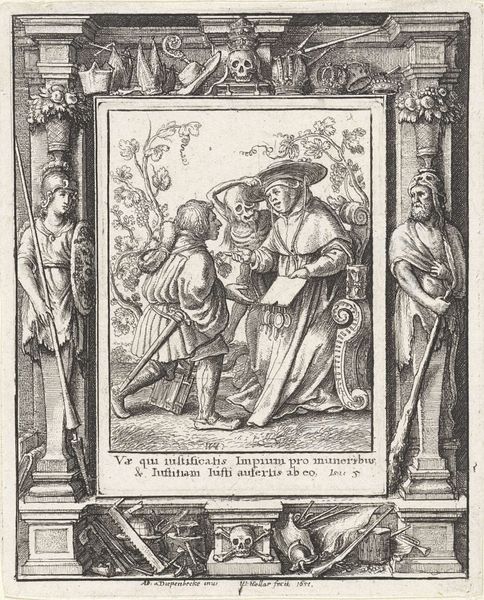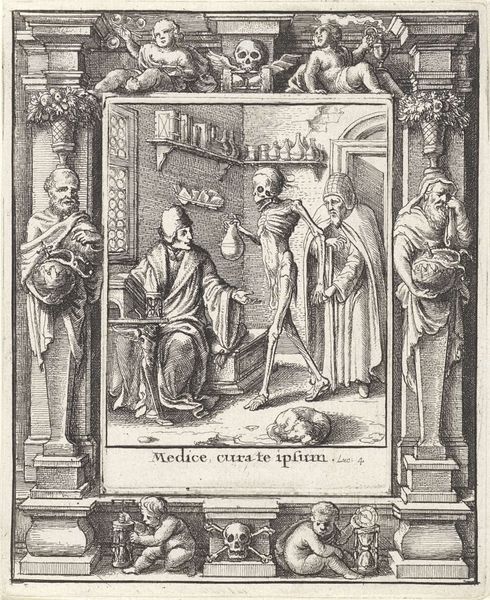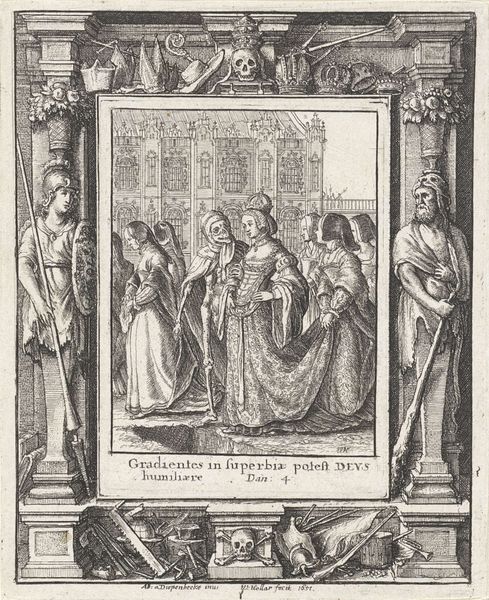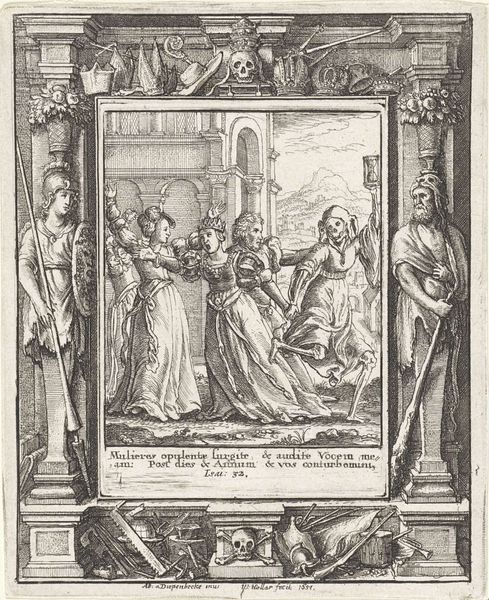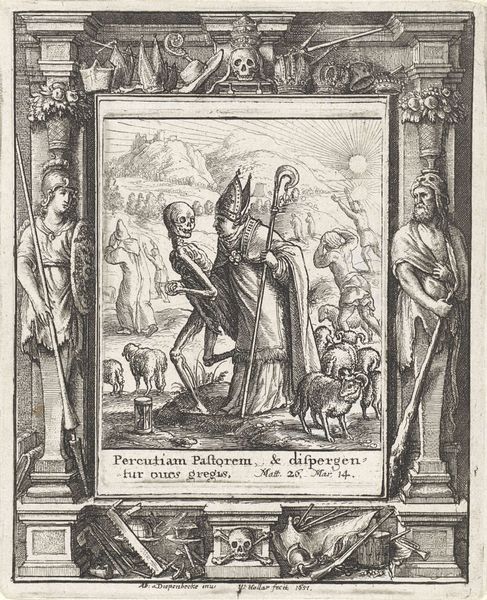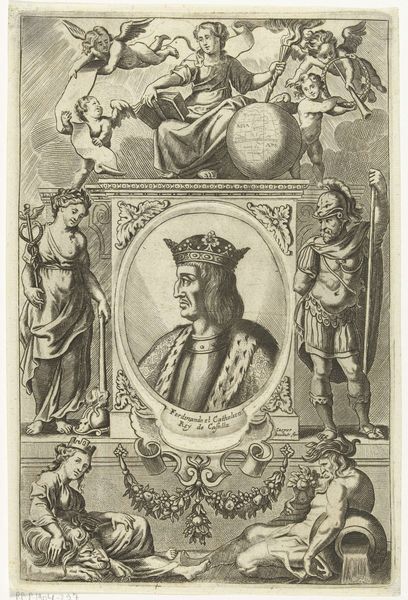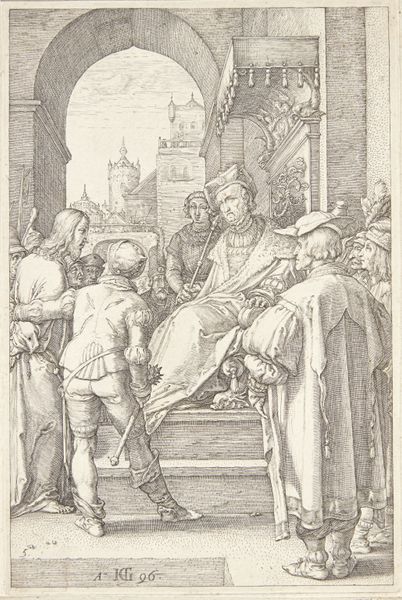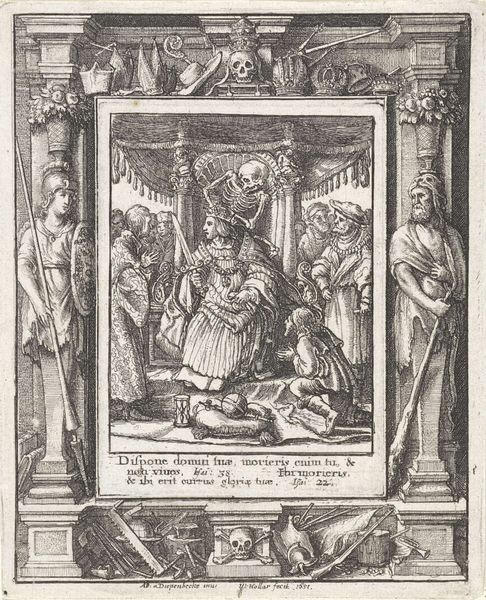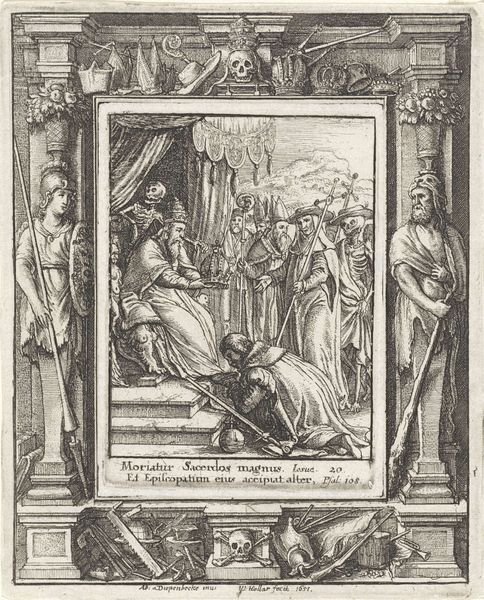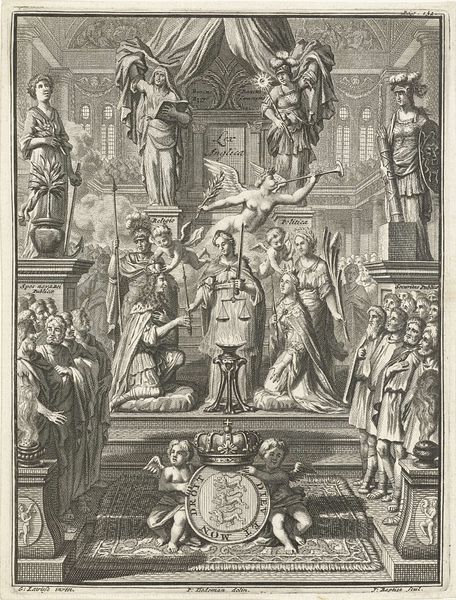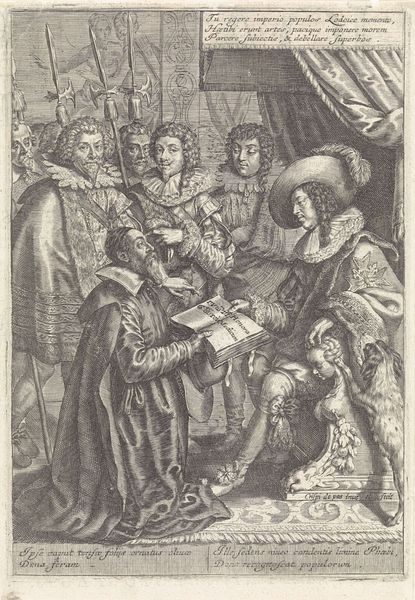
print, etching, engraving
#
allegory
#
baroque
# print
#
pen illustration
#
pen sketch
#
etching
#
old engraving style
#
momento-mori
#
genre-painting
#
history-painting
#
engraving
Dimensions: height 115 mm, width 95 mm, height 77 mm, width 55 mm
Copyright: Rijks Museum: Open Domain
Editor: This etching, "The Lawyer and Death," created by Wenceslaus Hollar in 1651, shows Death taking the hand of a lawyer while other figures look on. I’m struck by the incredible detail Hollar achieved with just line work. What story do you see unfolding when you consider the means of its production and historical context? Curator: Looking at the production, the very act of etching, biting into the metal plate with acid, speaks to a social commentary. Legal dealings, often perceived as corrosive or 'biting,' are here linked materially to the corrosive process of etching. Think about the labour involved in the creation of these prints. They were designed for circulation, right? Meant to be consumed by a broad audience. Editor: So, the printmaking process allowed Hollar's commentary on law and mortality to reach a wider audience? Curator: Precisely. The choice of inexpensive materials facilitates accessibility and critique of the elites for the masses. Consider the content alongside this dissemination - what kind of anxieties are surfacing regarding professions and the fleeting nature of life and material success during the Baroque period, as visible in the “momento-mori” iconography? Editor: So the widespread availability of the print highlights concerns regarding the social structure of the time? Curator: Indeed! And note how the framed nature further separates high art from everyday experiences, challenging boundaries about access to imagery and social power at this period. Editor: It’s fascinating how focusing on the process and distribution adds another layer to the artwork’s message, and raises the importance of this imagery in cultural conversations! Curator: Right? And seeing art this way reveals not only its cultural values, but social significance.
Comments
No comments
Be the first to comment and join the conversation on the ultimate creative platform.
